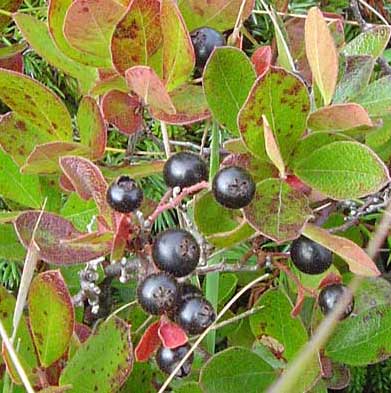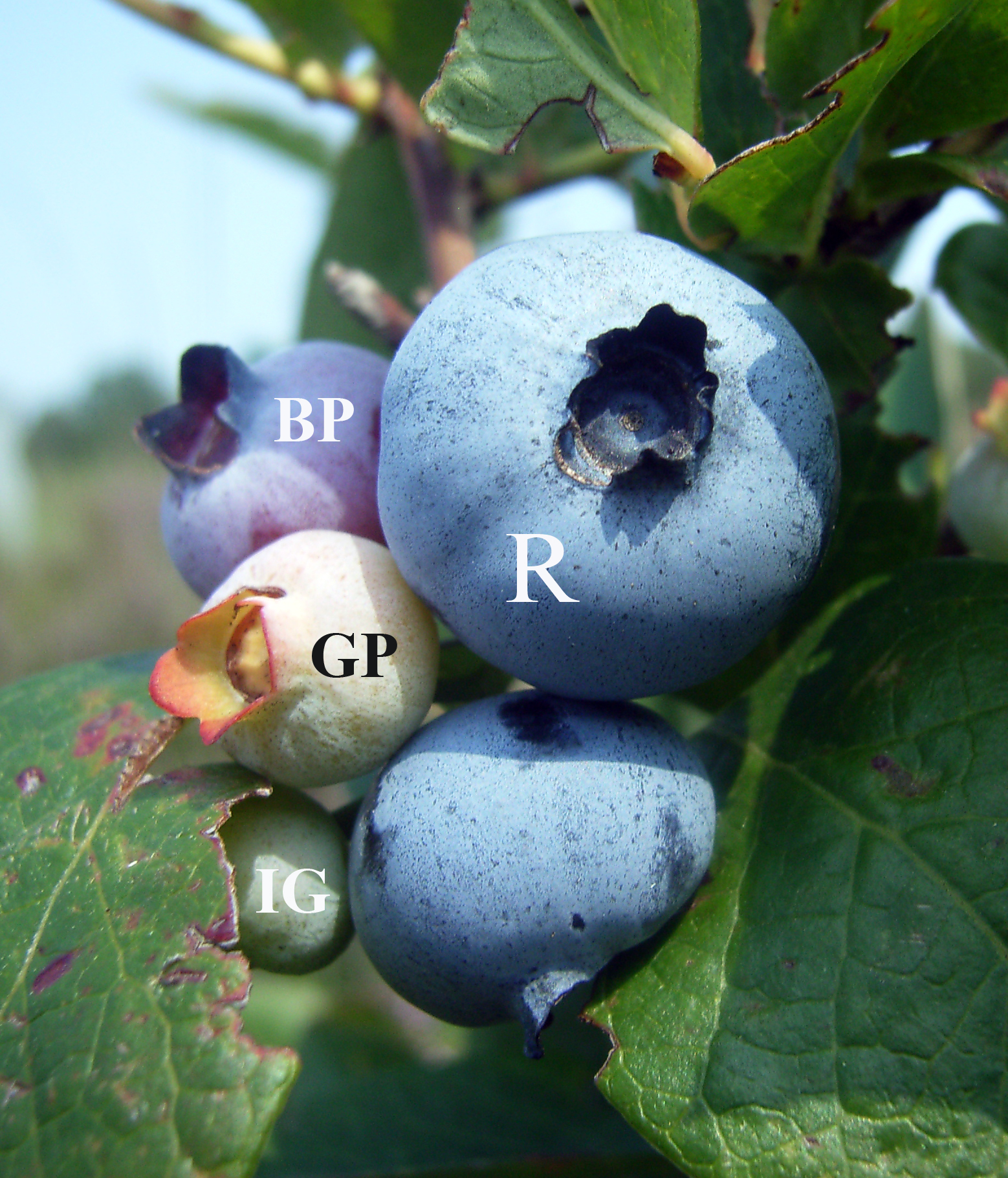|
Grape Island (Massachusetts)
Grape Island is an island in the Hingham Bay area of the Boston Harbor Islands National Recreation Area. The island is part of the territory of the town of Weymouth, Massachusetts. The island has a permanent size of , plus an intertidal zone of a further , and is composed of two drumlins, reaching an elevation of above sea level, and connected by a marshy lowland. Tidal sand spits extend from the west end towards Weymouth Neck in Webb Memorial State Park and from the east end towards Slate Island. As a visitor attraction, Grape Island offers trails, rocky beaches, and camping in wooded campsites. At weekends and summer weekdays it is served by a shuttle boat to and from Georges Island, connecting there with ferries to Boston and Quincy. The island was farmed and grazed for three hundred years, until the 1940s. On the eve of the American Revolution, the island was owned by Hingham resident Elisha Leavitt, a Tory. In 1775, British troops raided the island during the siege of B ... [...More Info...] [...Related Items...] OR: [Wikipedia] [Google] [Baidu] |
Boston Harbor
Boston Harbor is a natural harbor and estuary of Massachusetts Bay, and is located adjacent to the city of Boston, Massachusetts. It is home to the Port of Boston, a major shipping facility in the northeastern United States. History Since its discovery to Europeans by John Smith in 1614, Boston Harbor has been an important port in American history. Early on, it was recognized by Europeans as one of the finest natural harbors in the world due to its depth and natural defense from the Atlantic as a result of the many islands that dot the harbor. It was also favored due to its access to the Charles River, Neponset River and Mystic River which made travel from the harbor deeper into Massachusetts far easier. It was the site of the Boston Tea Party, as well as almost continuous building of wharves, piers, and new filled land into the harbor until the 19th century. By 1660, almost all imports came to the greater Boston area and the New England coast through the waters of Boston ... [...More Info...] [...Related Items...] OR: [Wikipedia] [Google] [Baidu] |
John Adams
John Adams (October 30, 1735 – July 4, 1826) was an American statesman, attorney, diplomat, writer, and Founding Fathers of the United States, Founding Father who served as the second president of the United States from 1797 to 1801. Before Presidency of John Adams, his presidency, he was a leader of the American Revolution that achieved independence from Kingdom of Great Britain, Great Britain, and during the war served as a diplomat in Europe. He was twice elected vice president of the United States, vice president, serving from 1789 to 1797 in a prestigious role with little power. Adams was a dedicated diarist and regularly corresponded with many important contemporaries, including his wife and adviser Abigail Adams as well as his friend and rival Thomas Jefferson. A lawyer and political activist prior to the Revolution, Adams was devoted to the right to counsel and presumption of innocence. He defied anti-British sentiment and successfully defended British soldiers agai ... [...More Info...] [...Related Items...] OR: [Wikipedia] [Google] [Baidu] |
Honeysuckle
Honeysuckles are arching shrubs or twining vines in the genus ''Lonicera'' () of the family Caprifoliaceae, native to northern latitudes in North America and Eurasia. Approximately 180 species of honeysuckle have been identified in both continents. Widely known species include ''Lonicera periclymenum'' (common honeysuckle or woodbine), ''Lonicera japonica'' (Japanese honeysuckle, white honeysuckle, or Chinese honeysuckle) and ''Lonicera sempervirens'' (coral honeysuckle, trumpet honeysuckle, or woodbine honeysuckle). ''L. japonica'' is an aggressive, highly invasive species considered a significant pest on the continents of North America, Europe, South America, Australia, and Africa. Some species are highly fragrant and colorful, so are cultivated as ornamental garden plants. In North America, hummingbirds are attracted to the flowers, especially ''L. sempervirens'' and ''L. ciliosa'' (orange honeysuckle). Honeysuckle derives its name from the edible sweet nectar obtainable fro ... [...More Info...] [...Related Items...] OR: [Wikipedia] [Google] [Baidu] |
Purple Loosestrife
''Lythrum salicaria'' or purple loosestrifeFlora of NW Europe''Lythrum salicaria'' is a flowering plant belonging to the family Lythraceae. It should not be confused with other plants sharing the name loosestrife that are members of the family Primulaceae. Other names include spiked loosestrife and purple Lythrum. This herbaceous perennial is native to Europe and Asia, and possibly Australia. Etymology and other names The generic name ''Lythrum'' is derived from the Greek ‘lythron’, meaning blood, in reference to the flower colour in some species.Gledhill D. 1985. ''The Names of Plants''. Cambridge University Press However, Pliny (A.D. 23-79) stated that ''Lythrum'' is named for Lysimachus, an army general and friend of Alexander the Great. ‘’Lysimachus’’ is derived from the Greek ‘’lysis’’, meaning ‘’loosing’’ and ‘’mache’’, meaning strife. Mitich LW. 1999. ''Lythrum salicaria'' L. ''Weed Technology'' 13: 843 – 846. The specific epith ... [...More Info...] [...Related Items...] OR: [Wikipedia] [Google] [Baidu] |
Cordgrass
''Spartina'' is a taxon of plants in the grass family, frequently found in coastal salt marshes. Its species are commonly known as cordgrass or cord-grass, and are native to the coasts of the Atlantic Ocean in western and southern Europe, north-western and southern Africa, the Americas and the islands of the southern Atlantic Ocean; one or two species also occur on the western coast of North America and in freshwater habitats inland in the Americas. The highest species diversity is on the east coasts of North and South America, particularly Florida. They form large, often dense colonies, particularly on coastal salt marshes, and grow quickly. The species vary in size from 0.3–2 m tall. Many of the species will produce hybrids if they come into contact. Taxonomy In 2014, the taxon ''Spartina'' was subsumed into the genus ''Sporobolus'' and reassigned to the taxonomic status of section,Peterson, PM, et al (2014) A molecular phylogeny and new subgeneric classification of ''Sporo ... [...More Info...] [...Related Items...] OR: [Wikipedia] [Google] [Baidu] |
Rosa Rugosa
''Rosa rugosa'' (rugosa rose, beach rose, Japanese rose, Ramanas rose, or letchberry) is a species of rose native to eastern Asia, in northeastern China, Japan, Korea and southeastern Siberia, where it grows on beach coasts, often on sand dunes. It should not be confused with ''Rosa multiflora'', which is also known as "Japanese rose". The Latin word "rugosa" means "wrinkled", referring to the wrinkled leaves.Jo Ann Gardner Sara Williams Description ''Rosa rugosa'' is a suckering shrub which develops new plants from the roots and forms dense thickets 1–1.50 m tall with stems densely covered in numerous short, straight prickles 3–10 mm long. The leaves are 8–15 cm long, pinnate with 5–9 leaflets, most often 7, each leaflet 3–4 cm long, with a distinctly corrugated (rugose, hence the species' name) surface. The leaf is elliptical in shape with a rounded base or broadly cuneate with a leather feel, dark green top. The back of the leaf is composed of ... [...More Info...] [...Related Items...] OR: [Wikipedia] [Google] [Baidu] |
Sambucus Canadensis
''Sambucus canadensis'', the American black elderberry, Canada elderberry, or common elderberry, is a species of elderberry native to a large area of North America east of the Rocky Mountains, south to Bolivia. It grows in a variety of conditions including both wet and dry soils, primarily in sunny locations. Description It is a deciduous suckering shrub growing to tall. The leaves are arranged in opposite pairs, pinnate with five to nine leaflets, the leaflets around long and 5 cm broad. In summer, it bears large ( diameter) corymbs of white flowers above the foliage, the individual flowers diameter, with five petals. The fruit (known as an elderberry) is a dark purple to black berry 3–5 mm diameter, produced in drooping clusters in the fall. Taxonomy It is closely related to the European ''Sambucus nigra''. Some authors treat it as conspecific, under the name ''Sambucus nigra'' subsp. ''canadensis''. Toxicity Inedible parts of the plant, such as the leaves, s ... [...More Info...] [...Related Items...] OR: [Wikipedia] [Google] [Baidu] |
Huckleberry
Huckleberry is a name used in North America for several plants in the family Ericaceae, in two closely related genera: ''Vaccinium'' and ''Gaylussacia''. The huckleberry is the state fruit of Idaho. Nomenclature The name 'huckleberry' is a North American variation of the English dialectal name variously called 'hurtleberry' or 'whortleberry' () for the Vaccinium myrtillus, bilberry. In North America the name was applied to numerous plant variations all bearing small berries with colors that may be red, blue or black. It is the common name for various ''Gaylussacia'' species, and some ''Vaccinium'' species, such as ''Vaccinium parvifolium'', the ''red huckleberry'', and is also applied to other ''Vaccinium'' species which may also be called blueberry, blueberries depending upon local custom, as in New England and parts of Appalachia. Taxonomy ''Gaylussacia'' Four species of huckleberries in the genus ''Gaylussacia'' are common in eastern North America, especially Gaylussacia b ... [...More Info...] [...Related Items...] OR: [Wikipedia] [Google] [Baidu] |
Blueberry
Blueberries are a widely distributed and widespread group of perennial flowering plants with blue or purple berries. They are classified in the section ''Cyanococcus'' within the genus ''Vaccinium''. ''Vaccinium'' also includes cranberries, bilberries, huckleberries and Madeira blueberries. Commercial blueberries—both wild (lowbush) and cultivated (highbush)—are all native to North America. The highbush varieties were introduced into Europe during the 1930s. Blueberries are usually prostrate shrubs that can vary in size from to in height. In commercial production of blueberries, the species with small, pea-size berries growing on low-level bushes are known as "lowbush blueberries" (synonymous with "wild"), while the species with larger berries growing on taller, cultivated bushes are known as "highbush blueberries". Canada is the leading producer of lowbush blueberries, while the United States produces some 40% of the world supply of highbush blueberries. Origin and h ... [...More Info...] [...Related Items...] OR: [Wikipedia] [Google] [Baidu] |
Raspberry
The raspberry is the edible fruit of a multitude of plant species in the genus ''Rubus'' of the rose family, most of which are in the subgenus '' Idaeobatus''. The name also applies to these plants themselves. Raspberries are perennial with woody stems. World production of raspberries in 2020 was 895,771 tonnes, led by Russia with 20% of the total. Description A raspberry is an aggregate fruit, developing from the numerous distinct carpels of a single flower. What distinguishes the raspberry from its blackberry relatives is whether or not the torus ( receptacle or stem) "picks with" (i.e., stays with) the fruit. When picking a blackberry fruit, the torus stays with the fruit. With a raspberry, the torus remains on the plant, leaving a hollow core in the raspberry fruit. Raspberries are grown for the fresh fruit market and for commercial processing into individually quick frozen (IQF) fruit, purée, juice, or as dried fruit used in a variety of grocery products such as raspb ... [...More Info...] [...Related Items...] OR: [Wikipedia] [Google] [Baidu] |
Dewberry
The dewberries are a group of species in the genus ''Rubus'', section ''Rubus'', closely related to the blackberries. They are small trailing (rather than upright or high-arching) brambles with aggregate fruits, reminiscent of the raspberry, but are usually purple to black instead of red. Alternatively, they are sometimes referred to as ground berries. Description The plants do not have upright canes like some other ''Rubus'' species, but have stems that trail along the ground, putting forth new roots along the length of the stem. The stems are covered with fine spines or stickers. Around March and April, the plants start to grow white flowers that develop into small green berries. The tiny green berries grow red and then a deep purple-blue as they ripen. When the berries are ripe, they are tender and difficult to pick in any quantity without squashing them. The berries are sweet and often less seedy than blackberries. In the winter the leaves often remain on the stems, but m ... [...More Info...] [...Related Items...] OR: [Wikipedia] [Google] [Baidu] |
Blackberry
The blackberry is an edible fruit produced by many species in the genus ''Rubus'' in the family Rosaceae, hybrids among these species within the subgenus ''Rubus'', and hybrids between the subgenera ''Rubus'' and ''Idaeobatus''. The taxonomy of blackberries has historically been confused because of hybridization and apomixis, so that species have often been grouped together and called species aggregates. For example, the entire subgenus ''Rubus'' has been called the ''Rubus fruticosus'' aggregate, although the species ''R. fruticosus'' is considered a synonym of '' R. plicatus''. ''Rubus armeniacus'' ("Himalayan" blackberry) is considered a noxious weed and invasive species in many regions of the Pacific Northwest of Canada and the United States, where it grows out of control in urban and suburban parks and woodlands. Description What distinguishes the blackberry from its raspberry relatives is whether or not the torus ( receptacle or stem) "picks with" (i.e., stays with) th ... [...More Info...] [...Related Items...] OR: [Wikipedia] [Google] [Baidu] |



_naturalised_in_Pennsylvania.jpg)


.jpg)

